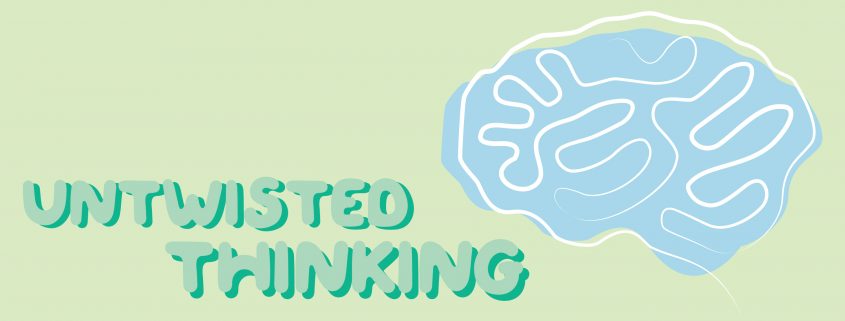Breaking Down Negative Thought Patterns
Breaking Down Negative Thought Patterns
Cognitive distortions (negative thinking) can impact our daily thought process. It can look like:
- Getting all of the best compliments, but we get stuck on the one piece of criticism we got.
- We hit our goal with our eating habits, yet after enjoying the delicious donut – we assume all our progress is lost.
- When we are at home, we think we need to be at the gym.
- When we are at the gym, we are thinking of everything we need to get done at home.
Our brain is conditioned to think distortive because we are human.
Here are some ways to help untwist the negative thinking:
-
Counter the Distortion:
Write down your negative thoughts so you can see which of the cognitive distortions you’re involved in. This will make it easier to think about the problem in a more positive and realistic way.
-
Examine the Evidence:
Instead of assuming that your negative thought is true, examine the actual evidence for it. For example, if you feel that you never do anything right, you could list several things you have done successfully.
-
The Double-standard Method:
Instead of putting yourself down in a harsh, condemning way, talk to yourself in the same compassionate way you would talk to a friend with a similar problem.
-
The Experimental Technique:
Do an experiment to test the validity of your negative thoughts. For example, if, during an episode of panic, you become terrified that you’re about to die of a heart attack, you could jog or run up and down several flights of stairs. This will prove that your heart is healthy and strong.
-
Thinking in Shades of Gray:
Although this method might sound drab, the effects can be illuminating. Instead of thinking about your problems in all-or- nothing extremes, evaluate things on a range from 1 to 100. When things don’t work out as well as you hoped, think about the experience as success rather than a complete failure. See what you can learn from the situation.
-
The Semantic Method:
Simply substitute language that is less colorful and emotionally loaded. This method is helpful for “should statements”. Instead of telling yourself “I shouldn’t have made that mistake”, you can say, “It would be better if I hadn’t made that mistake.”
-
Re-attribution: Instead of automatically assuming that you are “bad” and blaming yourself entirely for a problem, think about the many factors that may have contributed to it. Focus on solving the problem instead of using up all your energy blaming yourself and feeling guilty.
-
Cost-Benefit Analysis:
List the advantages and disadvantages of a feeling (like getting angry when your plane is late), a negative thought (like “no matter how hard I try, I always screw up”), or a behavior pattern (like overeating and lying around in bed when you’re depressed). You can also use the Cost-Benefit Analysis to modify a self-defeating belief such as “I must always try to be perfect”.
Where to go from here
You don’t have to use all of these tricks. Find which ways best fit you and the situations you find yourself having negative thoughts. Untwisting your negative thoughts will lead to a happier, more fulfilling life – and who doesn’t want that!?
If you find yourself need more support when it comes to your thoughts and emotions, schedule an appointment with our Licensed Counselor, Brandi. Your emotional and mental health is just as important and your physical health!
Source: The Feeling Good Handbook by David Burns, MD.


